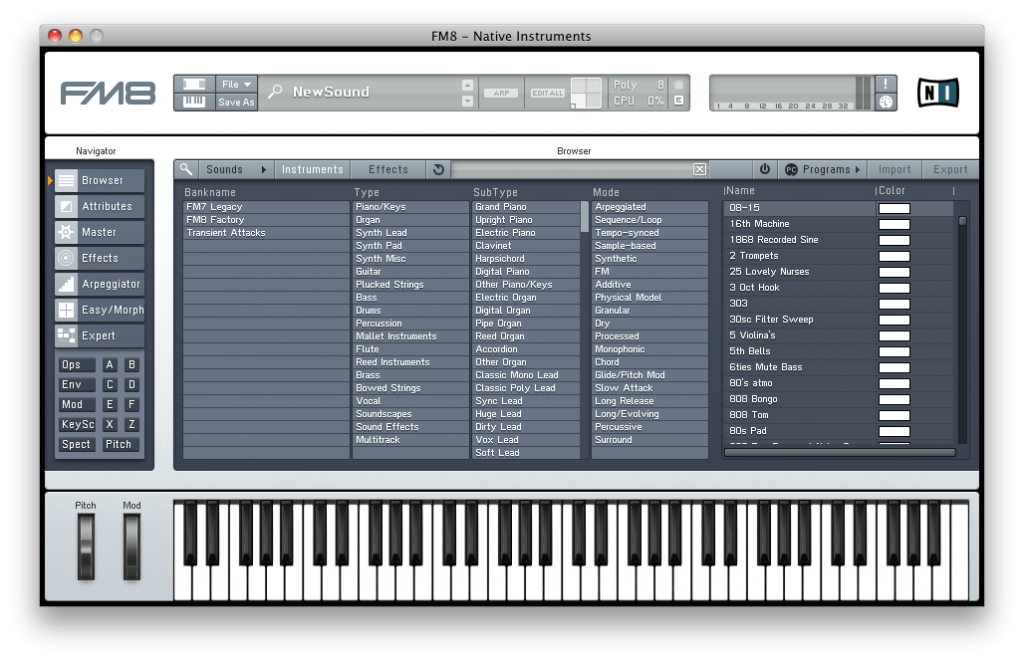
Let’s start in the Expert section, which can be found on the left Navigator menu. I’m going to try and explain as much as I can about FM8 without derailing this tutorial too much in to a “this is exactly how every feature on FM8 works” article, but I’ll explain enough about it as I go along so you should be able to follow regardless of your prior experience with this synth. Today I want to focus on just pad creation, making something that deceptively complex sounding, yet still ethereal and angelic. Here’s what we’re working towards: Getting Started So what happens if we modulate the pitch by another pitch? This is what frequency modulation is – we no longer hear the original pitch being shifted slightly, but we hear a complex set of tones and harmonics, useful for creating bells, weird pads, punchy basses and a whole plethora of sounds. What’s happening, is the pitch (an audible frequency) is being modulated by an LFO (an inaudible frequency). In a synth this is easy to achieve, we just use an LFO to slightly modulate an oscillator’s pitch. The great blues and soul singers such as Ella Fitzgerald were masters at this, a gentle undulating swell of vibrato on certain notes makes phrases sound beautiful. Vibrato is a technique employed by singers and many instrumentalists (including guitarists, violinists, trumpet players etc) that slowly fluctuates the pitch of a resting note. These make them useful for changing other parameters such as filter cutoff or amplitude, or in the case of vibrato: pitch. So LFOs are below the human hearing range – if we plugged one into a speaker you might feel some change in air pressure or hear a click, but as an oscillator it’s inaudible. This range is sub-sonic, sub meaning below and sonic meaning audible.

LFO stands for Low Frequency Oscillator, and would ordinarily function between about 0.01 Hz and 20 Hz. It’s been around for years to transmit radio signals. As a concept, I struggled with it for years until I had a eureka moment – I was unsure how it different from standard pitch modulation. The term FM is probably (or at least until not that long ago) a household term which you would have come across through radio (see also AM, or Amplitude Modulation).

So without further ado, let’s start with some background… Frequency Modulation Yes, it’s not a walk in the park to program compared to standard subtractive synthesisers, but it’s capable of producing the same detailed timbre sounds as its forefathers, and going further in the process.


 0 kommentar(er)
0 kommentar(er)
